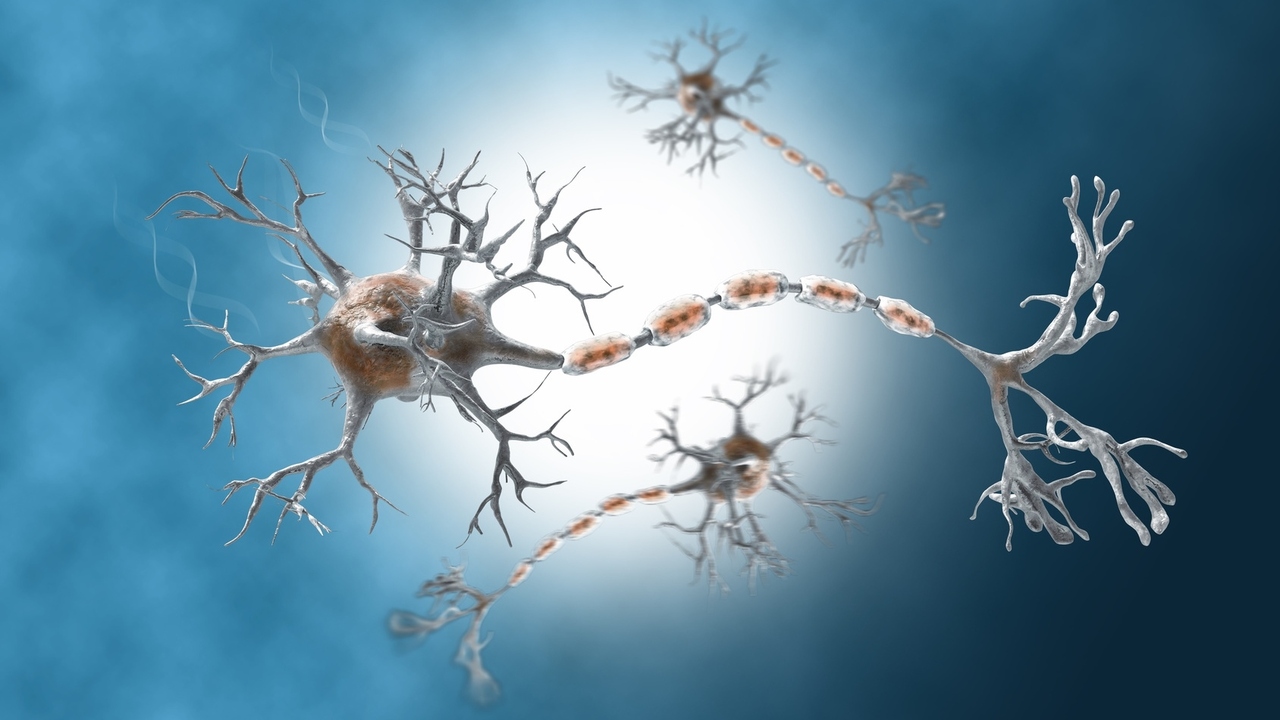 vitstudio/Fotolia
vitstudio/Fotolia
Multiple sclerosis and Guillain-Barré syndrome are both autoimmune diseases where the protective myelin coverings of the nerves are attacked by one’s own immune system. Both conditions are considered inflammatory demyelinating diseases of the nervous system.
The causes for both are unknown. While there are treatments for both, there is also no cure for either disease.
They differ in that MS affects the nerves of the brain and spinal cord, which is the central nervous system. Lesions are scattered throughout areas in the brain and often affect the optic nerve causing impaired vision.
Guillain-Barré is the result of an attack on the peripheral nervous system by cells located near the peripheral nerve roots. The onset of Guillain-Barré is dramatic, with rapid demyelinating nerve impairment occurring within hours or days of being affected.
Who is affected:
MS occurs in 40-100 people out of 100,000 and in mostly Caucasian populations. Only one-tenth of those affected are Japanese.(2)
MS is uncommon in children under the age of 10 and mostly appears in those aged 20 to 55. Women are more often affected than men.(4)
Guillain-Barré is more rare. According to the National Institute of Neurological Disorders and Stroke only 1 in 100,000 people have the disorder. It can affect people of any age and affects men and women equally. (3)
How it develops and the symptoms:
MS symptoms may occur gradually, or develop then disappear, making it difficult to determine what is causing them.
Optic neuritis is a common first symptom as are impairments in speech, walking and memory. Patients may report difficulty with the bowel, bladder and sexual function.
There are four types of MS. The most common type is relapsing-remitting MS where the symptoms flare up and improve, unpredictably, for years.
Guillain-Barré is often preceded by a viral or bacterial infection, and its onset is sudden and serious. The most common first symptoms are weakness in muscles of the extremities, and possibly the respiratory muscles, affecting the ability to breathe. Ventilator support may be needed in the first stage of the illness.
Usually, the attack stabilizes days or weeks after the beginning of the illness, then the person slowly and gradually improves.
“About 30 percent of those with Guillain-Barré still have a residual weakness after 3 years. About 3 percent may suffer a relapse of muscle weakness and tingling sensations many years after the initial attack.”(3)
Treatments:
Treatments for MS are more effective for relapsing-remitting MS, to speed the recovery from attacks and slow the progression of the disease. There are no FDA-approved treatments for primary-progressive MS.
Treatments for attacks may involve plasmaphoresis and steroids. There are several oral and injectable drugs used to modify the progression of relapsing-remitting MS.
Additional therapies such as physical therapy and muscle relaxants may be tried as well as alternative therapies such as meditation, yoga and massage.
The main treatments for Guillain-Barré are plasmaphoresis and high-dose immunoglobulin therapy. It is thought that plasmaphoresis helps remove antibodies and other damaging immune factors from the blood. Immunoglobulin is thought to boost the level of proteins immune cells use to block an attack by intruding organisms.
Additionally, during the acute time of a Guillain-Barré attack, the use of a ventilator and other medical equipment may be required, so patients are usually hospitalized.
Michele is an R.N. freelance writer with a special interest in woman’s healthcare and quality of care issues.
Edited by Jody Smith
1) Chapter 23 - Demyelinating diseases of the nervous system. Dartmouth Medical School. Retrieved March 13, 2016.
https://www.dartmouth.edu/~dons/part_3/chapter_23.html
2) F. Yoshi and Y. Shinohara. Autoimmune Neurological Diseases. Journal of the Japan Medical Association (Vol. 129, No. 7, 2003, pages 921–925). Retrieved March 13, 2016.
http://www.med.or.jp/english/pdf/2004_09/425_430.pdf
3) Guillain-Barré Syndrome Fact Sheet. National Institute of Neurological Disorders and Stroke. Retrieved March 13, 2016.
http://www.ninds.nih.gov/disorders/gbs/detail_gbs.htm
4) What Are the 4 Types of Multiple Sclerosis? EmpowHer. Retrieved March 13, 2016
https://www.empowher.com/multiple-sclerosis/content/what-are-4-types-multiple-sclerosis
5) Multiple Sclerosis Treatment. Mayo clinic.org. Retrieved March 13, 2016.
http://www.mayoclinic.org/diseases-conditions/multiple-sclerosis/diagnosis-treatment/treatment/txc-20131903




Add a Comment4 Comments
You did not mention CIDP the acute version of GBS. I was diagnosed with GBS. Many family members researched it and thought that they were now experts on the disease. They told me most people are cured of it. Little did I know that I would later be diagnosed with CIDP. I continue to get Ivig every three weeks. I am 4 and 1/2 years into this. No end in sight with the IVIG. My aunts don't get it and think that somehow I am exaggerating my health situation. Wish this article mentioned CIDP.
March 23, 2016 - 9:07pmThis Comment
Hi Anon,
I just tried to do some research on CIDP and there actually is not a lot to find. Sorry your family is not more supportive.
I am pasting this from WebMD below to that readers know what CIDP is. Even in their description, it sounds like most people improve but it takes longer. I hope you improve with more time.
take care,
Michele
Introduction
CIDP is sometimes thought of as the chronic form of acute inflammatory demyelinating polyneuropathy (AIDP), the most common form of Guillain Barré syndrome (GBS), in the United States and Europe. In contrast to GBS, most patients with CIDP cannot identify a preceding viral or infectious illness. GBS is a subacute disorder that progresses over 3-4 weeks, then plateaus and usually improves over months and does not recur. CIDP, by definition has ongoing symptoms for over 8 weeks and usually does not improve unless ongoing treatment is given.
March 24, 2016 - 6:26amThis Comment
Thank you for this. I have the axonal version of GBS and this article will help me explain it to my friends
March 21, 2016 - 3:51pmThis Comment
Glad you found it helpful.
take care,
Michele
March 22, 2016 - 7:23amThis Comment